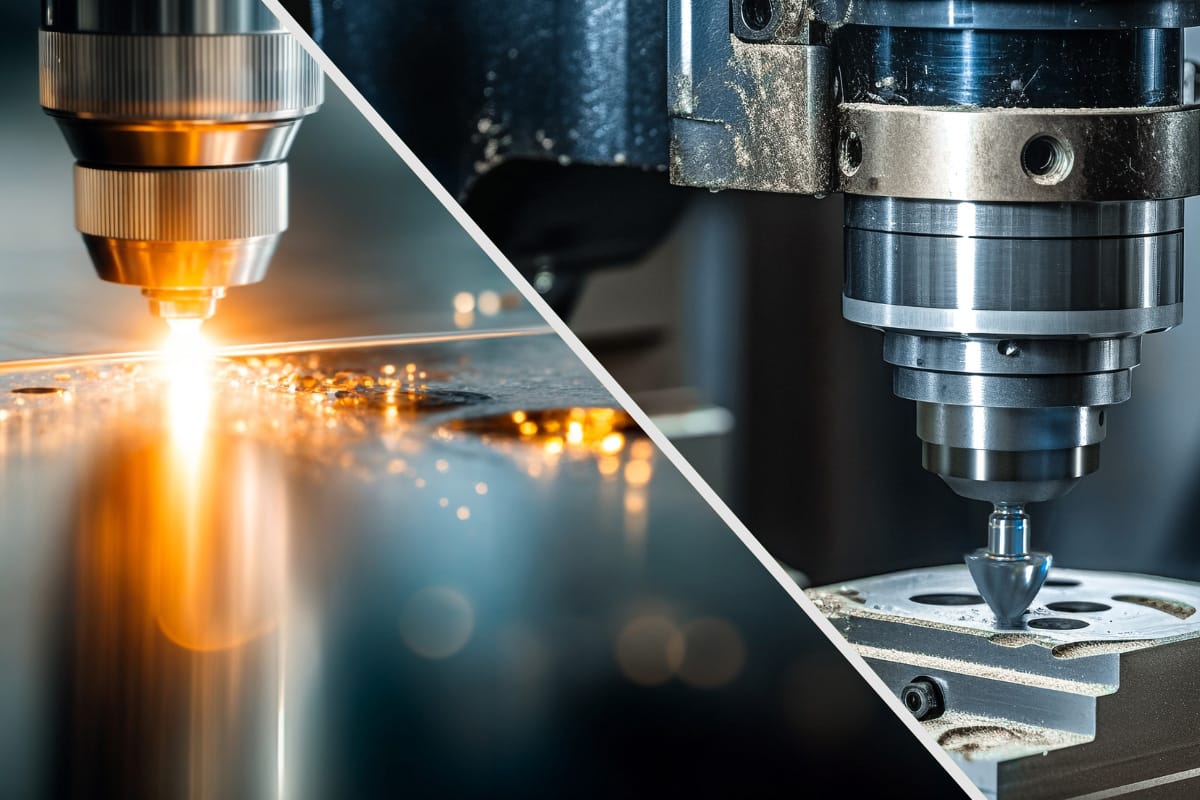EMS Facility Tours: A Buyer’s Field Guide
A one-hour walk through an electronics manufacturer can tell you more than ten sales calls—if you know where to look. Use this guide to make your Electronics Manufacturing Services facility tour practical and productive: what to watch, what to ask, and how to spot the signals of a partner who will ship on time, keep quality tight, and communicate clearly.
TL;DR: Buyer’s Cut
- Align the visit: Send your BOM, volumes, and success criteria so the tour focuses on what you need.
- Verify on the floor: Organized receiving, calm changeovers with today’s target visible, in-process checks, a recent test report on hand, and a tidy rework bench.
- Confirm data & finish: Clean traceability you can demo on the spot, plus final assembly and pack-out that match your shipping reality.
- IMS advantage: Electronics and sheet metal in one facility → faster tweaks, fewer handoffs, and one accountable schedule.
- Decision criteria: Judge by clarity of the walk, proof on demand, and how the team handles change.
- Book an EMS tour at IMS Electronics Manufacturing to see your product’s full path.
Before You Arrive: Set Expectations
Share a short prep package so the tour aligns with your needs:
➕ Current BOM and drawings
➕ Target volumes and delivery cadence
➕ Customer-critical requirements and any known risks to address (heat, fit, finish, packaging)
➕ The criteria you’ll use to select a contract manufacturing partner
Help them focus the tour on what you need to decide. Share context so the tour spotlights what matters to you.
What to Evaluate During Your Visit
1) Receiving, Storage, and Traceability
🎬 Scene to notice: A pallet arrives. Are parts scanned in and parked in clearly marked areas? Do moisture-sensitive components head to dry storage? Are labels readable from a few feet away?
🔎 Look for: ESD controls, moisture-sensitive device handling, humidity cabinets, barcode scanning, and organized zones for quarantine vs. released inventory.
✔️ Signs of good practice: Lots tied to incoming inspection results, a visible traveler or record, controlled access, FIFO in use.
💬 Ask: “If I need the history of one unit, how fast can you pull it up?”
🎯 Why it matters: Strong front-end control prevents latent defects and makes traceability fast during audits and returns.
2) Print, Placement, and Reflow Operations
🎬 Scene to notice: A calm changeover in progress. Operators know what’s running now and what’s next. Someone points to today’s target and shows where the run sits against it.
🔎 Look for: Clean stencil protocols, solder paste inspection systems, pick-and-place setup practices, feeder calibration, and current reflow profiles for the alloys being used.
✔️ Signs of good practice: Documented changeover procedures, staged feeder carts for upcoming runs, control charts near equipment, and first-pass yield (FPY) data by line and shift.
💬 Ask: “Show me today’s target and where this run is against it.”
🎯 Why it matters: These core processes drive FPY and schedule reliability—the foundation of consistent delivery.
3) Inspection and Test Strategy
🎬 Scene to notice: Checks during the build, not only at the end. A technician pulls up a recent test report for a product like yours and points to a “known good” reference unit.
🔎 Look for: AOI/AXI inspection, in-circuit and functional test setups, and environmental stress screening where relevant.
✔️ Signs of good practice: Documented false-fail rates, clear defect codes, and automated data capture that integrates with quality systems.
💬 Ask: “What do you test before anything ships, and what data comes with each shipment?”
🎯 Why it matters: Effective testing catches issues early, reducing rework and field failures while accelerating your ramp-up.
4) Rework and Repair Capabilities
🎬 Scene to notice: A quiet, organized rework bench, the right tools, a second check before units return to the line.
🔎 Look for: Dedicated ESD-safe workstations, certified micro-soldering equipment, proper lighting and optical aids, and documented repair procedures.
✔️ Signs of good practice: Tracked rework rates, operator training records, and clear verification processes before units return to the line.
💬 Ask: What sends a unit to rework vs. scrap, and who signs off?
🎯 Why it matters: Everyone needs touch-ups. Controlled rework is a hallmark of mature operations. How rework is managed often distinguishes experienced partners from those still developing their processes.
5) New Product Introduction (NPI)
🎬 Scene to notice: Engineering on the floor during early builds, quick fixtures, and fast feedback loops between teams.
🔎 Look for: Dedicated NPI workspace with quick-turn tooling capabilities, engineering presence on the production floor, and clear design-for-manufacturing feedback processes.
✔️ Signs of good practice: Build reviews documented in travelers, rapid prototyping capabilities, and in-house fixture production.
💬 Ask: What will our pilot run look like (quantity, timeline), and what are the exit criteria to move to production?
🎯 Why it matters: NPI performance often predicts how smoothly full production will run.
6) Quality Management in Practice
🎬 Scene to notice: A short stand-up where yesterday’s issues, owners, and due dates are reviewed beside a corrective-action board. Recent actions should show a metric that moved.
🔎 Look for: Material Review Board areas, corrective action tracking boards, layered audit processes, and visible control charts.
✔️ Signs of good practice: Clear problem-solving processes with assigned owners and deadlines and recent corrective actions with measurable improvements.
💬 Ask: If you find a nonconformance on our build, what will you send us (data, photos, plan), and how soon?
🎯 Why it matters: Certificates are baseline; seeing the system used every day builds confidence.
Further Reading: Six Sigma in EMS
See how DMAIC reduces defects and keeps builds predictable at IMS.
Read the article →
7) Data Integration and Traceability
🎬 Scene to notice: A unit is scanned, and its status appears instantly on a simple dashboard. A staffer pulls up a recent job record in under a minute.
🔎 Look for: Real-time lot and unit-level tracking, live traveler status updates, and scan points at key steps.
✔️ Signs of good practice: Dashboards showing FPY, throughput, and on-time delivery by program.
💬 Ask: What shipment data do we receive by default (serials, test results, certificates)?
🎯 Why it matters: Good data visibility during your tour typically translates to reliable reporting and smoother audits later.
8) Box Build and Final Assembly
🎬 Scene to notice: A finished unit moving to pack-out. Instructions for labels and torque settings are clear. Staging is organized by program and looks ready for pickup.
🔎 Look for: Cable assembly stations, torque-controlled tools, enclosure assembly areas, and final functional testing capabilities.
✔️ Signs of good practice: Posted work instructions, calibrated tools, packaging validation records.
💬 Ask: If our label or packaging spec changes, how fast do work instructions get updated—and how do you prevent old versions from being used?
🎯 Why it matters: The handoff from PCBA to finished assembly is where delays often hide. Strong finishes protect everything that came before.
People and Process Indicators
Pay attention to these cultural signals:
- Visual management: 5S boards, daily team meetings, and visible performance targets
- Training systems: Certification matrices showing who’s qualified for which processes
- Safety and organization: Clear walkways, proper PPE use, and clean work environments
- Communication: How information flows between operators, technicians, and engineers
Make Your Visit Productive
→ Before the tour: Share product information and objectives so the EMS facility can show you the most relevant processes and capabilities.
→ During the tour: Follow your product’s likely path through the EMS facility, from receiving through final test and shipping.
→ Questions to ask along the way:
- “What’s the current first-pass yield for builds similar to ours?”
- “How long does changeover typically take between products of our complexity?”
- “Can you show us a recent corrective action and the improvement it delivered?”
- “What documentation and test data do you provide with each shipment?”
Three Quick Ways to Compare Any EMS Provider
After each EMS facility tour, rate your experience on these three factors:
- Clarity of the Walk: Did you understand your product’s path without needing a technical glossary?
- Proof on Demand: When you asked for recent reports or examples, did you get them in minutes, not promises to follow up?
- Change Agility: When you posed a “what if” scenario, could the team demonstrate how they’d handle it—especially across both electronics and mechanical work?
If you can answer yes to all three, you’ve likely found a contract manufacturing partner who will make you look good with your own customers.
What You’re Really Evaluating
A strong electronics manufacturing services partner delivers predictable schedules, consistent quality, and clear communication. If your product includes both electronics and mechanical parts, look for evidence that these teams work together—not in silos. The goal is to find a partner whose capabilities, culture, and processes align well with your program’s needs and your team’s working style.
The Bottom Line
A manufacturing facility visit cuts through the sales presentations and shows you exactly how your products will be built, tested, and shipped. The difference between a good Electronics Manufacturing Services provider and a great one often comes down to integration, communication, and the quiet discipline you can only see in person.
Ready to see how our integrated electronics and sheet metal manufacturing works in practice? Book an EMS facility tour at IMS. We’ll map your product’s path, show you the checks and reports you’ll receive, and walk you through our metal shop so you can see how integrated electronics + sheet metal cut handoffs and shorten lead times.




